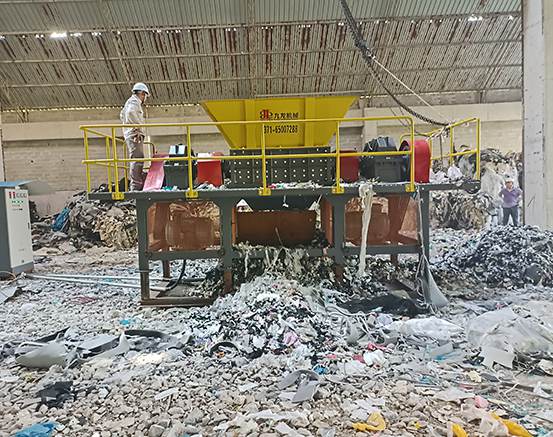Feasibility analysis of bulky waste shredding
The feasibility analysis of bulky waste shredding involves multiple considerations:
Market demand and supply
Market demand: Understand the demand for bulky waste shredding in the local or regional area, including the quantity and type of discarded furniture, electrical appliances, construction waste, etc.
Supply: Analyze the supply sources of bulky waste, including households, businesses, construction sites, etc.
Bulky waste
Technology and facilities
Processing facilities: Investigate whether there are sufficient processing facilities to process bulky waste, such as processing plants, sites, processing equipment (such as crushers, sorting equipment), etc.
Technical level: Assess whether the available processing technology is mature and effective enough to effectively process bulky waste of different types and sizes.

Kowloon bulky waste shredding and sorting line project site
Economic feasibility
Cost-benefit analysis: Consider the construction and operation costs of the processing facilities, including equipment purchase, transportation, labor costs, etc.
Market benefits: Analyze the saleable value or reuse value of the waste after treatment, such as the benefits obtained by recycling reusable materials.
Environmental impact
Environmental standards: Ensure that the shredding of large waste complies with environmental regulations and standards to reduce negative impacts on the environment.
Sustainability: Consider the long-term impact of the treatment of large waste on the local environment and whether it complies with the principles of sustainable development.
Social and policy factors
Policy support: Understand the degree of policy support for waste treatment and recycling by the local government.
Social acceptance: Analyze the support and attitude of the local society for the large waste shredding project, as well as the awareness of the correct classification and treatment of waste.
Risk assessment
Technical risk: Consider whether the treatment technology used is stable and reliable, and whether there are technical uncertainties and risks.
Market risk: Assess the risks that may be brought about by market changes, including changes in waste supply, fluctuations in the recycling market, etc.
For large waste shredding projects, it is crucial to comprehensively consider multiple factors such as market demand, technical feasibility, economic benefits, environmental impact and social factors, which will help evaluate the feasibility of the project and formulate appropriate strategies and plans.